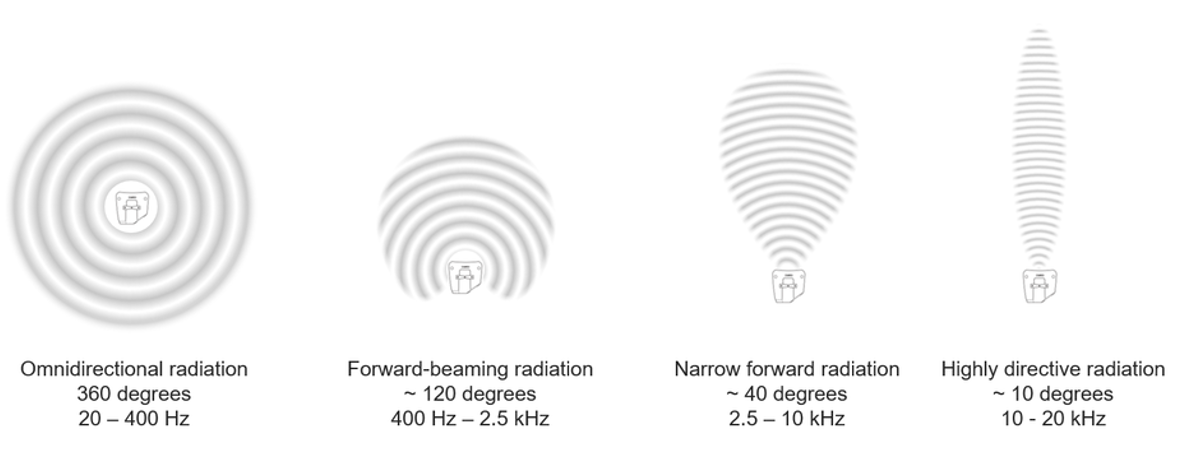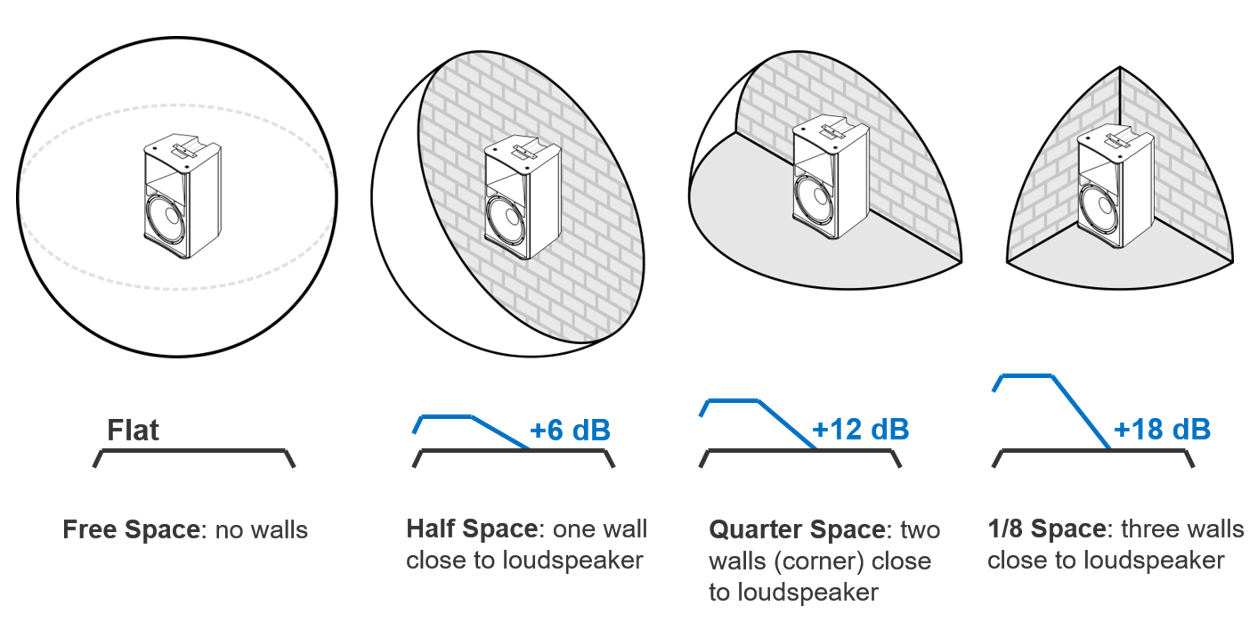Sound Advice | Loudspeaker placement part 1: Low frequency build-up
In this quick tip we discuss the pit falls of low frequency build when loudspeakers are placed against solid objects and offer some tips on maintaining clarity in your PA system.
Today's Lesson
Let’s talk about loudspeaker placement. More specifically, let's focus on what happens to low frequencies when a loudspeaker is placed right up against a hard, heavy wall or surface, or possibly several surfaces.
Sound propagates differently at specific frequency ranges as outlined by the diagram below.

Anything below 400Hz is what we call omnidirectional and will radiate in all directions equally. When your loudspeaker is up against a solid surface, the low frequencies are reflecting off of that solid surface and then adding back with themselves moving forward creating a significant level increase in the front.
In this next diagram, we can see that a single surface can create up to a 6 dB increase in low frequency build-up. That increase compounds with every additional surface, up to 18 dB if the loudspeaker is in a corner, against three solid surfaces.

To adjust for this physical phenomenon, the solution is to use a high pass filter below 200 Hz to tame these low frequency build ups. Using your ears, reduce the bass level output a few decibels at a time until the bass and low-mid reproduction becomes clear, tight and punchy again, restoring balance, clarity and definition to your PA without losing any significant bottom end.
For more lessons and videos, see our QSC YouTube page.